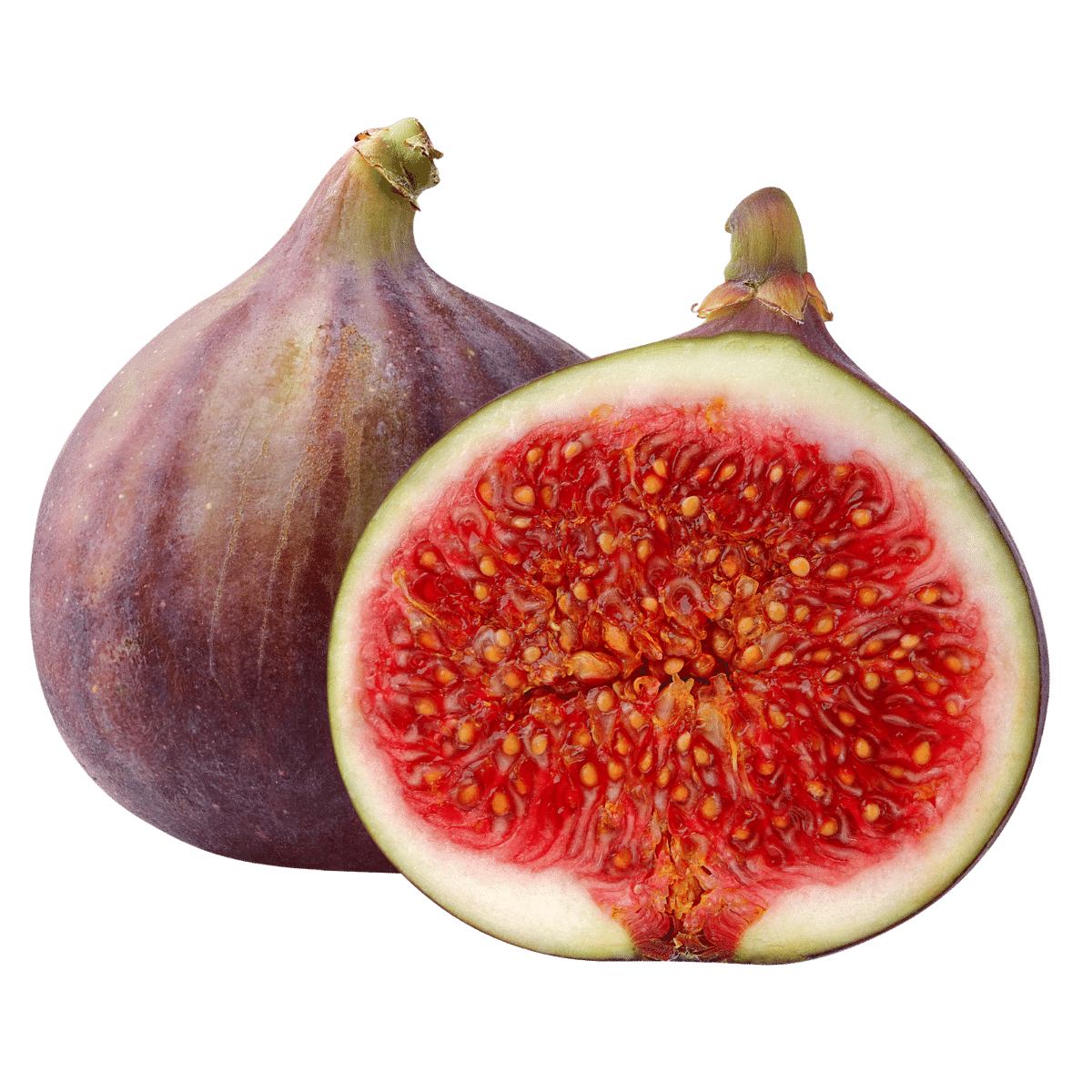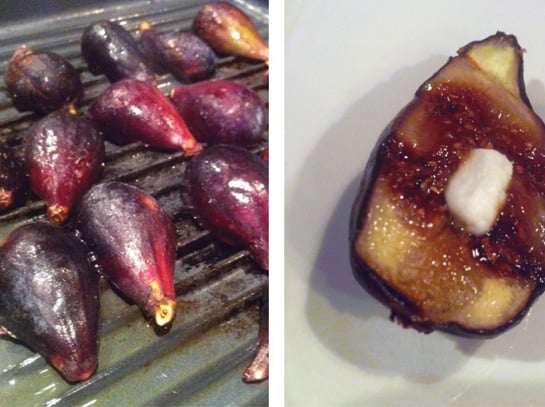
How to Select Figs
- Select figs that are round, plump, and heavy for their size. They should yield to very gentle pressure but not feel mushy.
- It’s fine if figs have wrinkly skin but avoid figs that are mushy, moldy, soggy, or smell sour.
- Figs do not ripen much once they have been harvested, so avoid firm figs as firmness indicates underripeness.
When Are Figs in Season?
Figs are generally in season from the middle of May through November. Some varieties of figs have two seasons – a smaller harvest in early summer (from old tree branches) and a larger harvest in late summer to early fall (from new branches). Figs from the second season have thicker skins and more concentrated sweetness.
Varieties of Figs
The Black Mission Fig is the sweetest of all fig varieties and grows all over California. This fig has a molasses-caramel and bold fig flavor. This type is the one most often dried. The Brown Fig is another common variety, but it is less sweet and has a milder flavor than the Mission fig. These subtleties make them great for adding to salads.
Tiger figs, also called candy stripe or panache, have a citrus with raspberry jam flavor. These are harvested between July and November each year. Tiger figs are harder to grow, so you may only see them around sometimes. Another green fig is the Calimyrna. It has a bold nutty flavor with honey and butterscotch flavors and is available for harvest between July and September. The Calimyrna is the sweetest of all green figs and works well in salads or on cheese boards.
The Kadota fig is not as sweet as other figs and has smoother flesh. While it may not make a great snack, it does work well in salads, jammed, or drizzled with honey. Kadota figs are available for harvest from June through October. The newest member of the fig family is the Sierra fig, introduced in 2005. It has a light, sweet flavor and may be harvested between June and November each year.
Figs Nutrition Facts & Benefits
One medium-sized (2 ¼ inch) fig provides,
- approx 37 calories
- 0 grams of fat
- 0 grams of protein
- 10 grams of carbohydrates
- 8 grams of natural sugar
- 1.45 grams of fiber
Here are just a few of the many ways that figs can benefit your health:
1) Figs may reduce high blood pressure. They are rich in potassium, an ideal counterbalance to the sodium in your diet. When there is no healthy balance between potassium and sodium, you can develop high blood pressure, which leads to heart disease.
2) The calcium and potassium in figs work well to improve your bone density and prevent diseases like Osteoporosis.
3) figs’ high fiber and probiotics-rich content mean they are good for a healthy digestive system. The fiber keeps you regular, preventing constipation and other digestive issues, while the probiotics feed your good gut bacteria.
4) Consuming figs may improve your skin, especially if you have allergic dermatitis.
How to Store Figs
How To Store Figs: Figs have a fairly short shelf life so they are best used as soon as possible. If you are unable to use them immediately, place them on their sides on a paper towel-lined plate. Store them in the coldest part of the refrigerator for up to a week.
How To Freeze Figs: Figs can be frozen whole, sliced, or peeled. Flash freeze them first by placing them on a parchement-lined baking sheet and freezing until solid. Then, transfer the figs to a freezer-safe container or bag. Freeze for up to one year.
How to eat figs
There are many ways to eat figs, but one of the most popular is straight off the vine! Skin, seeds, all of it. If raw fruit isn’t your jam (get it?!), you can bake, grill or broil figs.
How to Prepare Figs
The most common way to enjoy figs is as a fresh snack. You may eat figs whole because their skin is usually thin and edible. This versatile fruit offers many ways to prepare them. Its flavor compliments everything from meats to sweet desserts.
Consider topping your oatmeal or Greek yogurt with fresh or dried figs for breakfast. Figs are also perfect for jamming. You can make a delicious fig jam with sugar and a little lemon juice for your morning toast. Figs make an excellent ingredient in smoothies, along with other fresh fruits.
Figs’ sweet, nutty flavor makes them a healthy contribution to lunchtime salad or sandwiches. They even work well in baked goods as a natural sweetener. You can cut them into small pieces and add them to dough or batter like raisins. You’ll soon be eating yummy cookies, muffins, or bread.
Finally, consider slicing and roasting figs with cinnamon and honey for a wonderful side to your dinner or after-dinner treat.




